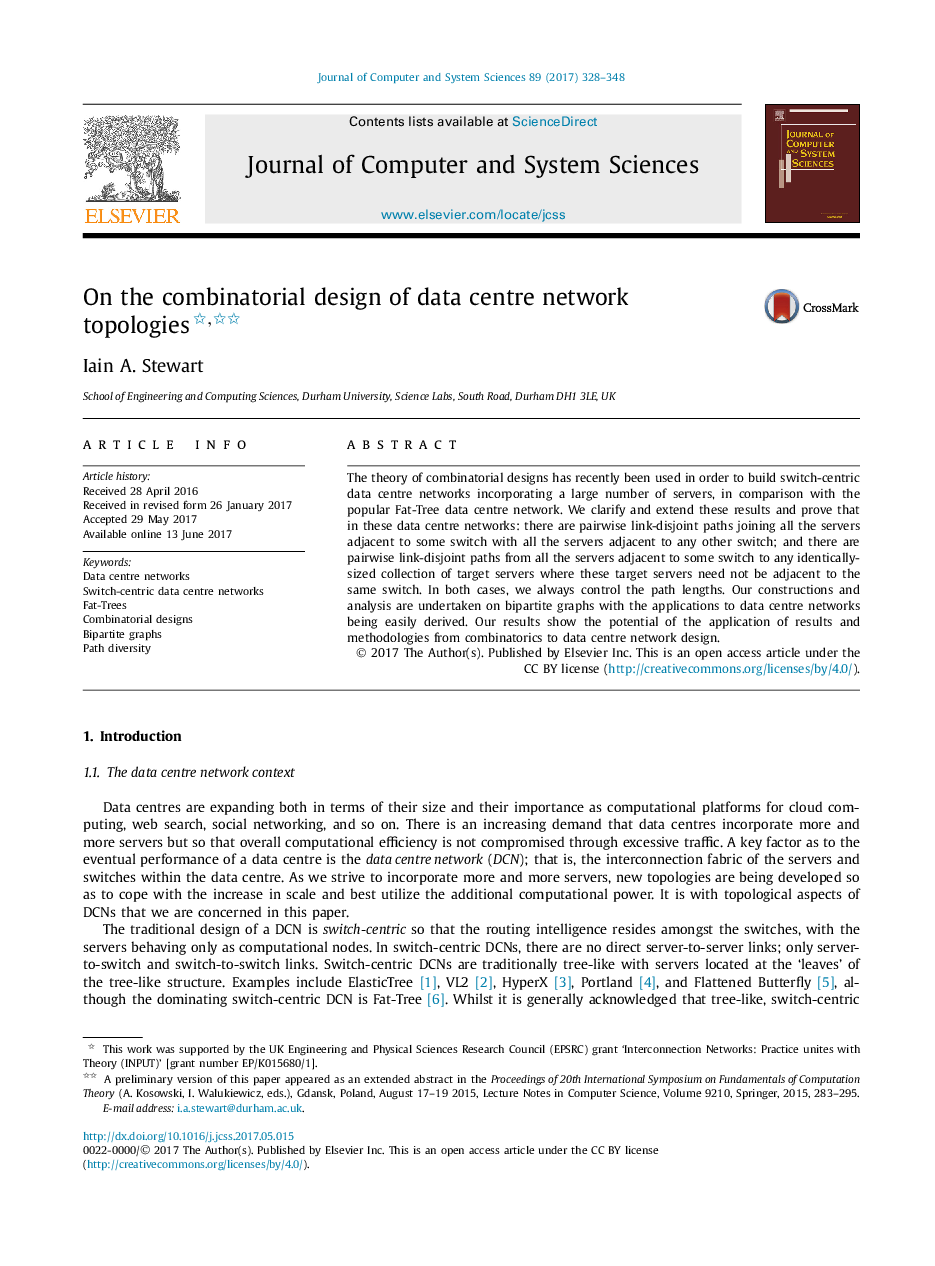| Article ID | Journal | Published Year | Pages | File Type |
|---|---|---|---|---|
| 4951209 | Journal of Computer and System Sciences | 2017 | 21 Pages |
â¢Application of combinatorial design theory to the design of data centre networks.â¢A generic construction of bipartite graphs using transversal designs.â¢The bipartite graphs have good one-to-one and one-to-many path diversity.
The theory of combinatorial designs has recently been used in order to build switch-centric data centre networks incorporating a large number of servers, in comparison with the popular Fat-Tree data centre network. We clarify and extend these results and prove that in these data centre networks: there are pairwise link-disjoint paths joining all the servers adjacent to some switch with all the servers adjacent to any other switch; and there are pairwise link-disjoint paths from all the servers adjacent to some switch to any identically-sized collection of target servers where these target servers need not be adjacent to the same switch. In both cases, we always control the path lengths. Our constructions and analysis are undertaken on bipartite graphs with the applications to data centre networks being easily derived. Our results show the potential of the application of results and methodologies from combinatorics to data centre network design.
